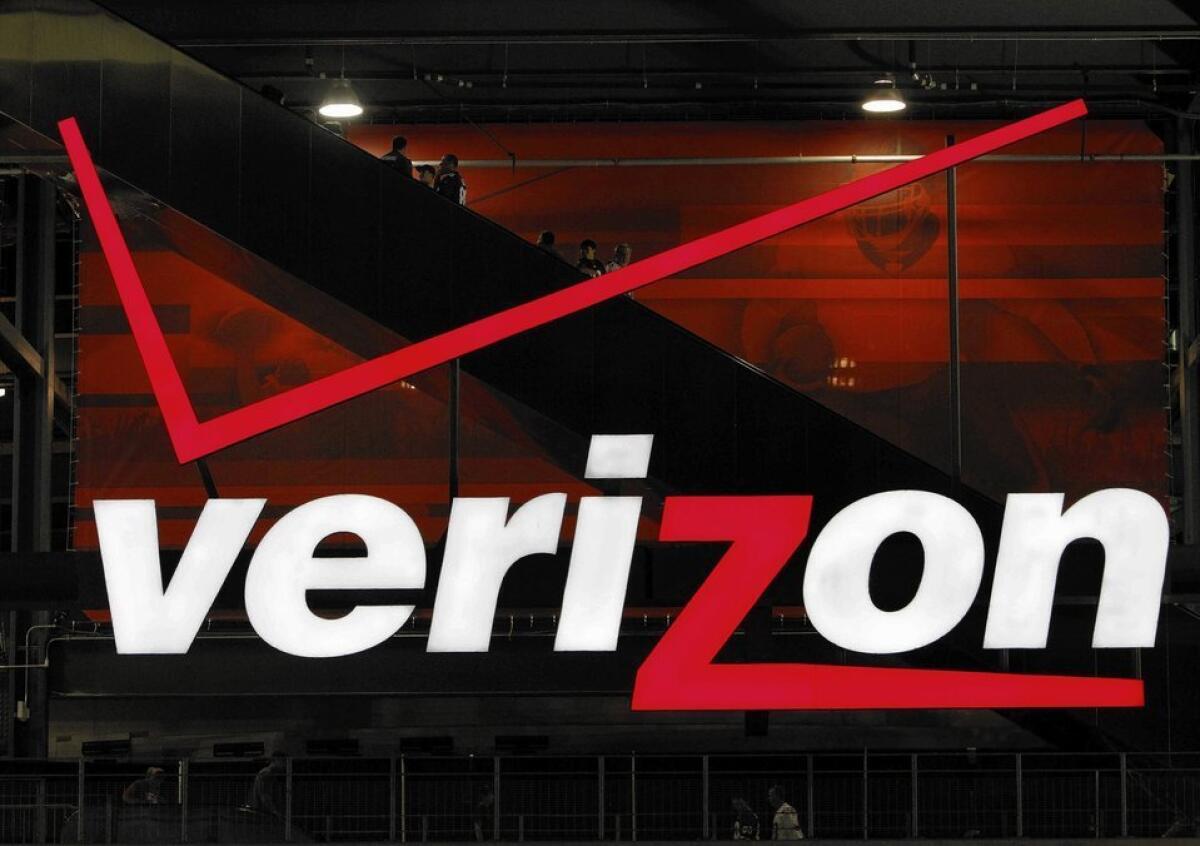Verizon to buy Intel’s online TV unit for about $200 million

Verizon Communications Inc. said it will acquire Intel Corp.’s online television unit in a deal that signals the growing importance of harnessing the Internet to deliver movies and television shows into the home.
The transaction, valued at less than $200 million, would marry Verizon’s FiOS cable TV service with Intel Media’s OnCue Cloud TV technology for streaming television shows online.
Verizon, which has seen growth in its FiOS service, will take charge of Intel’s OnCue, envisioned as a subscription TV service that enables users to watch television shows and movies delivered over the Internet.
The deal, announced Tuesday, suggests that Verizon wants to own online TV technology to hedge its bets as the television industry goes through a period of upheaval, and as more consumers are migrating to the Internet for entertainment, subscribing to services offered by Amazon.com, Netflix and Hulu.
FACES TO WATCH 2014: Digital media
The deal also marks a retrenchment for Intel, which three years ago won attention in technology circles for its promise to revolutionize pay TV. Company executives said Intel’s budding TV service would give consumers greater flexibility in programming packages. Initially, the company even talked about offering channels a la carte, in which subscribers would pick and choose the programs they would pay to receive.
Viewers could watch live TV and video-on-demand shows on their TVs or mobile devices. It also boasted a Cloud DVR feature that would enable subscribers to store their video libraries on remote computers. Intel built its own set-top box and even hired a respected BBC executive to help design its service.
Television viewers, hoping to cancel their traditional pay TV subscriptions, rejoiced.
But Intel’s ambition to rewrite the rules of the economics of television was crushed by network executives who saw little value in licensing their valuable programming for less money and lower ad revenues, because the shows would reach smaller audiences.
ON LOCATION: Where the cameras roll
In the end, the distribution rights Intel was negotiating for were no different from the content packages that existing cable and satellite distributors offer, according to several people familiar with the matter.
“So, by all accounts, what they were going to launch … would have been a cable look-alike service,” said cable industry analyst Craig Moffett of MoffettNathanson Research.
The effort also might have proved too much of a diversion for Intel.
“If you run through the rough math, it’s not much of an opportunity to sell chips,” said semiconductor industry analyst Stacy A. Rasgon of Sanford C. Bernstein & Co. “It was going to be a wonderful service ... but it’s been a distraction.”
PHOTOS: Celebrities by The Times
The Intel Media unit had enjoyed the support of former Chief Executive Paul Otellini, who resigned in late 2012. But it was deemed nonessential by the company’s current CEO, Brian Krzanich.
Last week, after it reported profit and revenue had fallen for the second consecutive year, the Santa Clara company announced a restructuring, with plans to lay off 5,000 employees, or about 5% of its workforce, this year.
Intel is not the only tech company that has stumbled trying to build a better TV delivery system. Qualcomm Inc. three years ago abandoned its Flo TV service, a subscription-based service designed for smartphones with a 3.5-inch screen. Even giants Apple Inc. and Google Inc. have faced resistance trying to license content produced by major Hollywood studios.
Intel employs more than 300 people in Santa Clara who worked on the Intel TV service. Most are expected to be kept on by Verizon.
PHOTOS: Box office top 10 of 2013
The technology could be a boost to Verizon’s existing television service by giving viewers easier ways to search for programming to watch on their TVs as well as their smartphones and tablets. Verizon’s FiOS has more than 5 million subscribers.
Verizon, in an earnings call Tuesday with investors, said it planned to use OnCue to differentiate its FiOS service from its pay TV rivals. It even plans to integrate it with its Verizon Wireless mobile service.
“The OnCue platform and team will help Verizon bring next-generation video services to audiences who increasingly expect to view content when, where and how they want it,” Verizon Chairman and Chief Executive Lowell McAdam said in a statement.
The telecommunications company announced last month that it would acquire Web start-up EdgeCast Networks Inc., a content delivery network in Santa Monica.
“We are positioning ourselves strategically ... to compete around the whole mobile-first world and [in] video,” said Verizon Chief Financial Officer Fran Shammo.
Times staff writer Meg James contributed to this report.
More to Read
From the Oscars to the Emmys.
Get the Envelope newsletter for exclusive awards season coverage, behind-the-scenes stories from the Envelope podcast and columnist Glenn Whipp’s must-read analysis.
You may occasionally receive promotional content from the Los Angeles Times.








